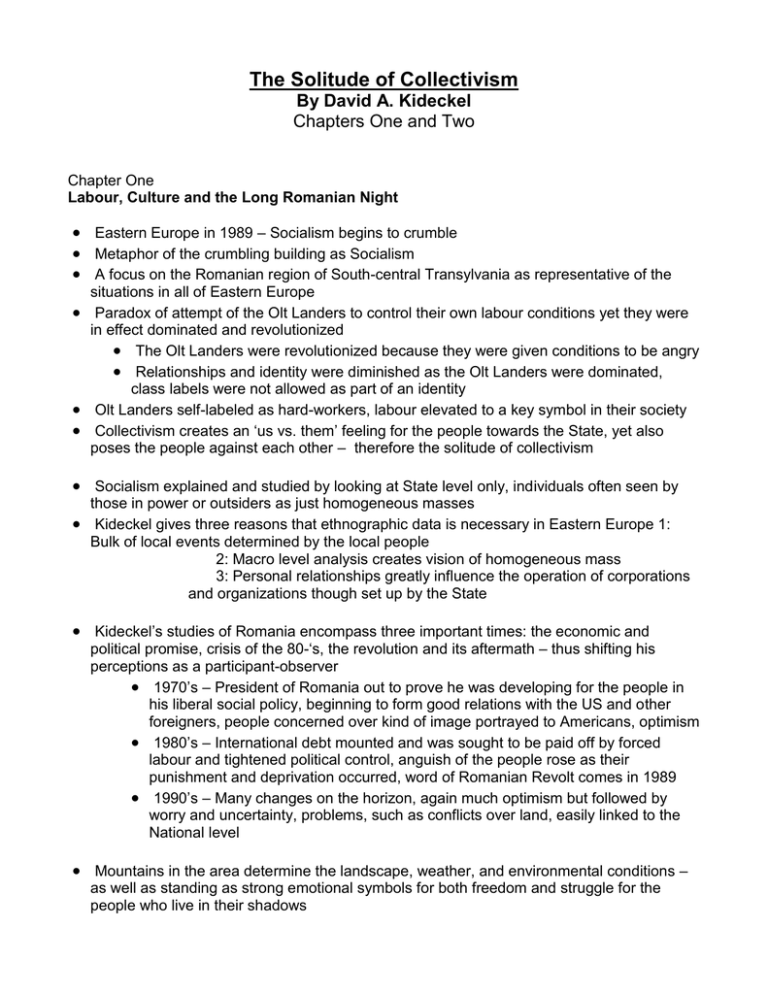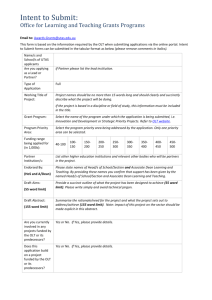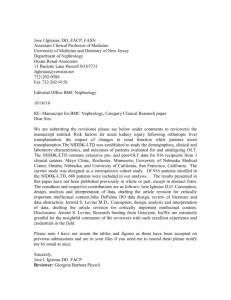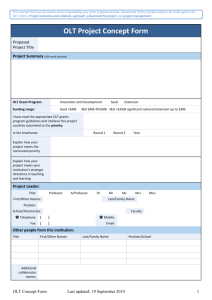The Solitude of Collectivism By David A. Kideckel Chapters One and Two
advertisement

The Solitude of Collectivism By David A. Kideckel Chapters One and Two Chapter One Labour, Culture and the Long Romanian Night Eastern Europe in 1989 – Socialism begins to crumble Metaphor of the crumbling building as Socialism A focus on the Romanian region of South-central Transylvania as representative of the situations in all of Eastern Europe Paradox of attempt of the Olt Landers to control their own labour conditions yet they were in effect dominated and revolutionized The Olt Landers were revolutionized because they were given conditions to be angry Relationships and identity were diminished as the Olt Landers were dominated, class labels were not allowed as part of an identity Olt Landers self-labeled as hard-workers, labour elevated to a key symbol in their society Collectivism creates an ‘us vs. them’ feeling for the people towards the State, yet also poses the people against each other – therefore the solitude of collectivism Socialism explained and studied by looking at State level only, individuals often seen by those in power or outsiders as just homogeneous masses Kideckel gives three reasons that ethnographic data is necessary in Eastern Europe 1: Bulk of local events determined by the local people 2: Macro level analysis creates vision of homogeneous mass 3: Personal relationships greatly influence the operation of corporations and organizations though set up by the State Kideckel’s studies of Romania encompass three important times: the economic and political promise, crisis of the 80-‘s, the revolution and its aftermath – thus shifting his perceptions as a participant-observer 1970’s – President of Romania out to prove he was developing for the people in his liberal social policy, beginning to form good relations with the US and other foreigners, people concerned over kind of image portrayed to Americans, optimism 1980’s – International debt mounted and was sought to be paid off by forced labour and tightened political control, anguish of the people rose as their punishment and deprivation occurred, word of Romanian Revolt comes in 1989 1990’s – Many changes on the horizon, again much optimism but followed by worry and uncertainty, problems, such as conflicts over land, easily linked to the National level Mountains in the area determine the landscape, weather, and environmental conditions – as well as standing as strong emotional symbols for both freedom and struggle for the people who live in their shadows Regional identity among the 65 Olt Land villages created by many shared experiences – daily and in history, Again an ‘us vs. them’ feeling exists, this time between people of different regions based on stereotypes and long held beliefs Detailed description of village – homes and infrastructure are telling of the people’s way of life, relationships and religion People have been shaped by past struggles, despite their possible wealth today evidences of taught frugality abound Description of the people and all facets of their daily life: dress, food, friendships, customs Labour, being a social and collective effort, is a critical factor affecting every facet of community life (as opposed to work which is simply physical exertion upon a goal-oriented task) Labour was the issue, which shaped the villager’s, view of the State, property, and Socialism itself. Though social institutions seem far removed from the labour process they actual serve as a main factor in retaining dominance over the people – the dominant groups often use schools and media to send down their ideas By continuing to provide social institutions the dominant can continue to dominate and deliver their political of cultural goals, though appearing to give the people help and some semblance of control The individual household serves as the primary forum for conflict between the State and the individual An accepted definition of a household is hard to find, just as it is here, there have been a wide variety of household types Under Socialist conditions of labour, the household as the main social and economic unit encouraged competition, again ‘us vs. them’ this time between producers Chapter Two The Origins of Olt Land Culture, Class, and Consciousness Feudal system dominated throughout its early history. Dominated by many different cultural groups. Caused a development of early social ties though common language and culture. (us vs. them) To calm instability by serfs, Habsburgs created the Uniate church in 1690. This is a mix between Roman Catholicism and the Orthodox church. Converts compensated economically and caused violence between the two sects. They should have hired an anthropologist to predict that The Austro-Hungarian Compromise of 1867 made Transylvania part of Hungary. This shifted Olt Land from labor-intensive agriculture to extractive industry. Everything went outside the province After re-unification with Romania, Olt Land left behind. They were not developed enough and Romania industrialized other areas instead. Olt Landers had to rely on cottage industry instead, which increased competition between the villagers. Agriculture was the base of the Olt Land economic system. Massive increases in arable land. 1722-16000 1910-50000 hectares. No piece of land was left unused To ease the effects of parcelization, poor soil, and unequal land distribution Olt Landers adopted a communal three-field crop rotation model. As agriculture changed so did stockkeeping. Draft animals gained more importance. Bovines were most important because their manure “turned cold soil warm.” Owning a lot of livestock also was a sign of social status Crisis occurred before WW2 when government policies changed to promote industrialization. Agricultural prices fell steeply. Olt Landers got more and more in debt and lost land and houses. This led to a large number of emigrations. Many young people with little hope in their homeland emigrated. Between 1880 and 1910, 15000 Olt Landers emigrated to the USA Emigrants returning to Olt Lands with money created competition, and those who remained in cities worked hard and respected their employers, thus increasing the class distinction that forced them from their homes. Religion, family ties, wealth, and the region you were from all created competition. Despite all the pressures that existed, Olt Landers grudgingly were able to maintain some stability in their middle-peasant lives before WW2. From their history Olt Landers had learned to accept change, and embrace development. They were able to compromise all of their struggles up to this point but the introduction of Socialism would change all of that.




